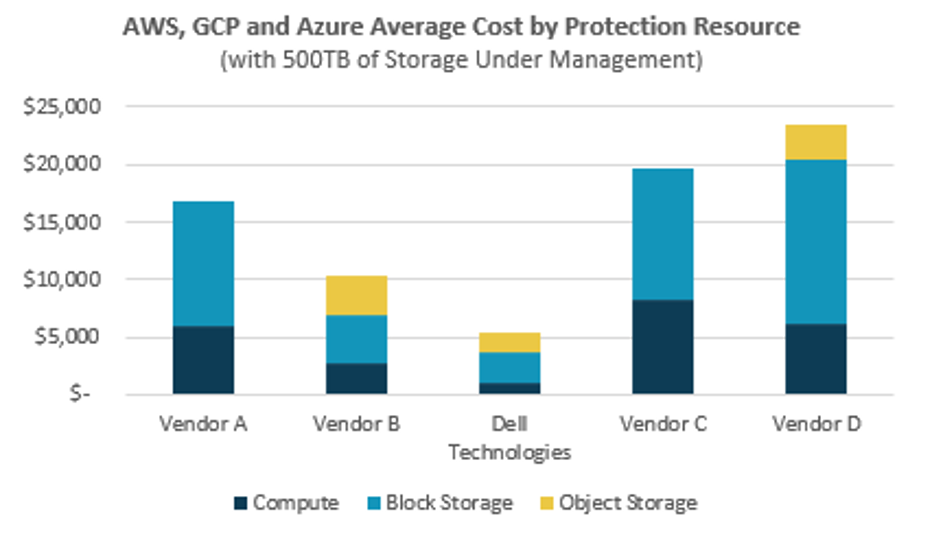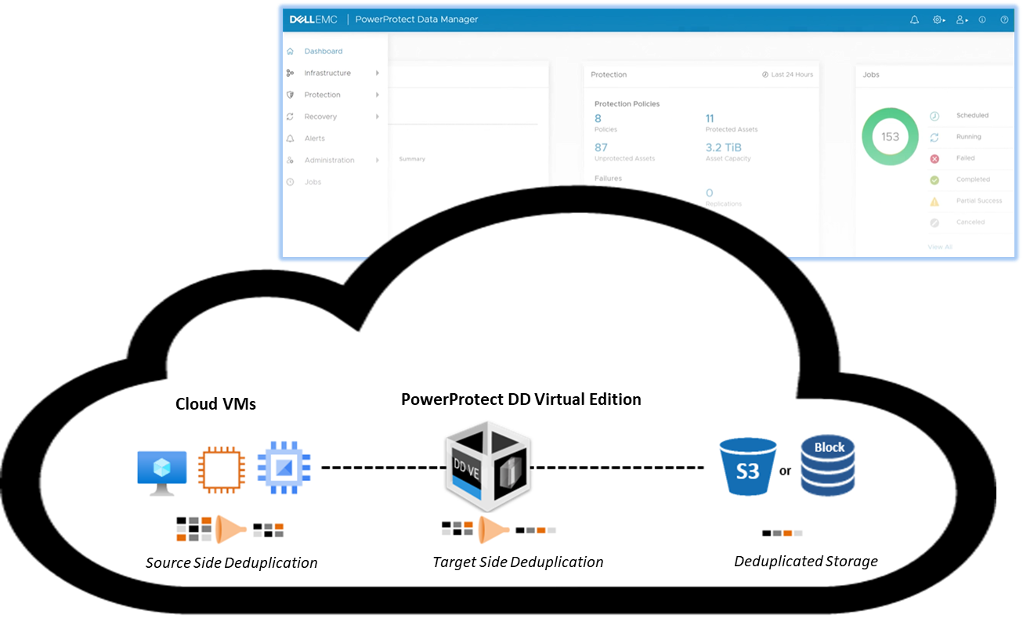
Brought to you by:
Enterprise Strategy Group | Getting to the Bigger Truth™
ESG ECONOMIC VALIDATION
Understanding the Economics of In-cloud Data Protection: A Dell EMC Data Protection Solution Designed with Cost Optimization in Mind
By Vinny Choinski, Senior Validation Analyst; and Christophe Bertrand, Senior Analyst
SEPTEMBER 2021
Executive Summary

Introduction
Background
Figure 1. Reasons for Moving Cloud Workloads back on Premises
Which of the following led your organization to move workloads running on cloud infrastructure back on premises? (Percent of respondents, N=875, multiple responses accepted)
Source: Enterprise Strategy Group
Dell Technologies Solution
Dell EMC PowerProtect Data Manager with Dell EMC PowerProtect DD Virtual Edition
Figure 2. PowerProtect Data Manager with PowerProtect DD Virtual Edition Workflow

Source: Enterprise Strategy Group
ESG Economic Validation
ESG Technical Validation
AWS Cost Model
Figure 3. AWS Data Protection Analysis
Infrastructure Cost of in-cloud Data Protection by Solutions Total Monthly AWS Cost (Compute & Storage)
Source: Enterprise Strategy Group
Azure Cost Model
Figure 4. Azure Data Protection Analysis
Infrastructure Cost of in-cloud Data Protection by Solutions Total Monthly Azure Cost (Compute & Storage)
Source: Enterprise Strategy Group
Google Cloud (GCP) Cost Model
Figure 5. GCP Data Protection Analysis
Infrastructure Cost of in-cloud Data Protection by Solutions Total Monthly Google Cloud Cost (Compute & Storage)
Source: Enterprise Strategy Group
ESG Economic Validation
Compute Efficiency
Storage Efficiency
Figure 6. Three Cloud Average Data Protection Resource Cost Analysis
AWS, GCP, and Azure Average Cost by Protection Resource (with 250TB of Storage Under Management)
Source: Enterprise Strategy Group
Figure 7. Overall Cost Analysis for each Cloud with 250 TB of Data Under Management
Lower Cost to Protect 250TB of Data with the Dell EMC Solution (Comparison of Monthly Costs)
Source: Enterprise Strategy Group
What the numbers mean:
- At 250TB of protection data under management, roughly the mid-point of the model, the Data Manager with DDVE solution delivers a 77% cost reduction over Vendor D. This is approximately $17,900 a month and $214,800 annually in savings based on the total data protection application resources required.
- These costs savings are due to the decoupling of metadata from the backup data transport process and the efficient metadata processing provided by the DD Boost running on the client systems. In addition, highly efficient deduplication processing (client-side via DD Boost and target-side on DDVE) resulted in a much higher deduplication ratio on S3 storage for the Dell Technologies solution.
The Bigger Truth
This ESG Economic Validation report was commissioned by Dell Technologies and is distributed under license from ESG.
1 Source: ESG Custom Research Survey Commissioned by Dell Technologies, Dell EMC VMware Intel Hybrid Multi-cloud Cornerstone Survey, Feb 2020.
All trademark names are property of their respective companies. Information contained in this publication has been obtained by sources The Enterprise Strategy Group (ESG) considers to be reliable but is not warranted by ESG. This publication may contain opinions of ESG, which are subject to change from time to time. This publication is copyrighted by The Enterprise Strategy Group, Inc. Any reproduction or redistribution of this publication, in whole or in part, whether in hard-copy format, electronically, or otherwise to persons not authorized to receive it, without the express consent of The Enterprise Strategy Group, Inc., is in violation of U.S. copyright law and will be subject to an action for civil damages and, if applicable, criminal prosecution. Should you have any questions, please contact ESG Client Relations at 508.482.0188.

Enterprise Strategy Group | Getting to the Bigger Truth™
Enterprise Strategy Group is an IT analyst, research, validation, and strategy firm that provides market intelligence and actionable insight to the global IT community.
